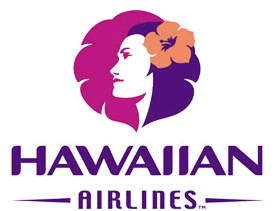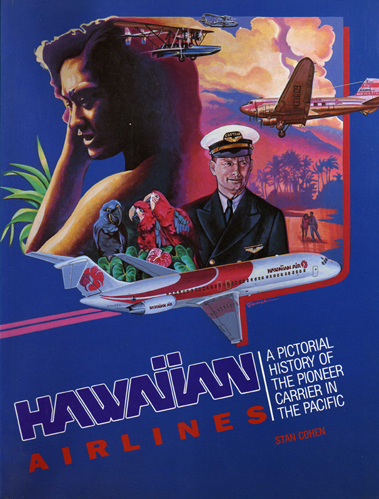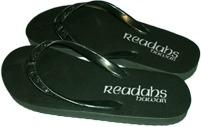
On November 11, 1929, Territorial Governor Lawrence M. Judd stood at the hangar at John Rodgers Airport for the inauguration of Inter-Island’s first scheduled flight between Honolulu and the other islands. Judd’s daughter, Betty, christened the two new Sikorsky S-38 amphibians, which were to operate the company’s schedule. Thousands attended the occasion, with more than 40 Army and Navy airplanes taking part.
Judd reviewed the various means of transportation seen in the Islands over the years. Then, looking at the two bright, shiny aircraft, he said, “The march of progress is again in evidence this morning.”
So began Hawaiian Airlines’ legacy as an official scheduled air carrier, as so elegantly stated by author Stan Cohen in his book Hawaiian Airlines: A Pictorial History of the Pioneer Carrier in the Pacific. Starting with just an inaugural flight to Hilo and one to Kauai, Hawaiian Airlines has expanded over the last eight decades from Manila in the west to Sydney in the south and Phoenix in the east, providing passengers with reliable service and the warmth of the islands.
Today marks the 80th anniversary of Hawaiian Airlines as an institution in aviation and Hawai’i. Around the world everyone knows of Hawaiian Airlines; and here in Hawai’i you can’t throw one slippah without hitting somebody who knows somebody who is related to someone who has worked at Hawaiian. Having a bit of interest in aviation history, I wanted to mark this occasion by reading and reviewing a book that at the time of its publishing was the only definitive history of Hawaiian Airlines. (Cohen, vii)

I was lucky enough to find a copy of Stan Cohen’s Hawaiian Airlines: A Pictorial History of the Pioneer Carrier in the Pacific a few months ago at the Book Off store in Pearlridge Center. It was originally published in 1986, but I have the third printing which was done in 1994 and includes a brief chapter about the operational years from 1988 – 1994—looking on the positive side of the bankruptcy that Hawaiian was currently mired in. I don’t think it’s in print anymore, but if you are interested you can either scour the Hawaiiana section of a used book store or possibly contact the publisher.
With this book, Cohen was attempting to chart the course of the airline through a narrative and large collection of photographs. Since there were no books covering the history of Hawaiian Airlines, Cohen relied heavily on primary sources such as manuscripts, speech transcripts, newspaper stories, magazine articles, press releases, annual reports and personal interviews. Through his hard work and research, Cohen crafted a terrific history of the airline—one that charts its roots in early Hawaiian aviation, through the Great Depression, World War II, the post-war boom and jet age, and deregulation.
His narrative is very informative, focusing primarily on the timeline of historical events throughout Hawaiian’s operation. I found myself enjoying most the history of Hawaiian up until the end of World War II. This was a fascinating time full of lots of innovation, daring risks, and historic events. The narrative never actually slacks after this, but from the post-war boom on, the story is primarily business-heavy with a focus on acquiring new aircraft and expanding routes. While these subjects are touched on earlier as well, they don’t have that unpredictable pioneering feel that you get from the earlier years. I touched upon a lot of this history in a book I read and reviewed previously, Peter Forman’s Wings of Paradise. I feel Wings of Paradise is a much more interesting in-depth read about the airline industry here in Hawai’i as it gives you an all-around story that’s inclusive of all of Hawai’i’s unique carriers as opposed to a straight-forward history of one specific airline. So while Cohen remains for the most part respectful and positive about Hawaiian’s decisions and setbacks, Forman pulls no punches.
However, there is one area that this book really shines and that is with the wealth of images captured within its pages. According to Cohen himself, at the time of the book’s printing, a majority of the photographs had never been published. From cover to cover, every page is adorned with historical photographs that truly capture the essence and feel of the period. It’s great to look back and see how the airports and their surrounding areas have changed over time and to see all of the truly beautiful aircraft that Hawaiian has flown over the years (I really like those big, shiny Sikorsky S-43 flying-boats). Aviation enthusiasts will appreciate the schematics of the older aircraft as well as the appendix which lists every aircraft flown by Hawaiian from 1929-1994. And anyone who enjoys history will love the inclusion of old advertisements, route maps, newspaper articles, envelopes and other assortments of graphical documents spread throughout the book.
For 80 years, Hawaiian Airlines has stood proud as one of the oldest legacy airlines in the world and a representative of the culture and spirit of Hawai’i. They truly helped to usher Hawai’i into the 20th century. I congratulate them on their anniversary and hope they continue to make history for many decades to come.
Hawaiian Airlines: A Pictorial History of the Pioneer Carrier in the Pacific
by Stan Cohen
Pictorial Histories Publishing, 1994 (Originally published 1986)
116 pages
About the Author*
Stan Cohen is a native of West Virginia and a resident of Missoula, Montana. He has been in the publishing business for many years and is the author of over 46 books, mainly on military history. His other airline book, Wings to the Orient, is a pictorial review of Pan American’s famous Pacific Clipper planes. Cohen has also written two Hawaiian books, East Wind Rain, A Pictorial History of the Pearl Harbor Attack, and The Pink Palace, The Royal Hawaiian Hotel. Stan runs Pictorial Histories Publishingbased in Missoula, who specializes in history books of the Civil War, World War Two, Alaska, Montana, Virginia and more.
*Referenced primarily from Hawaiian Airlines: A Pictorial History of the Pioneer Carrier in the Pacific (1994)




